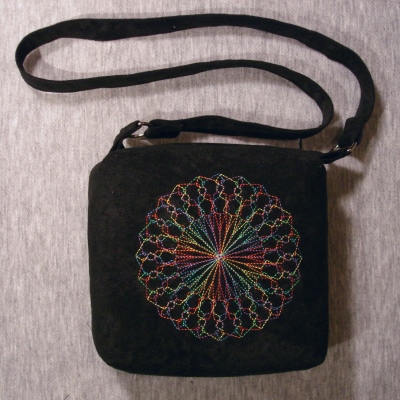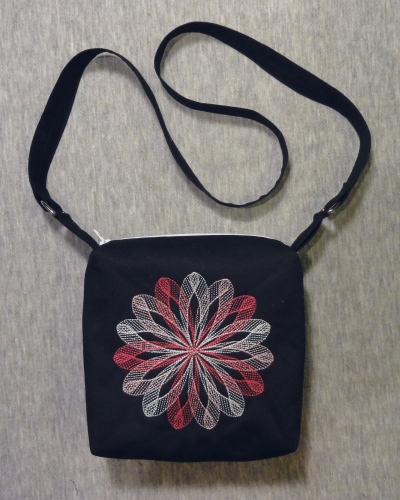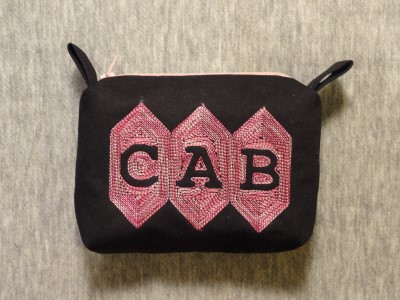Do you remember this purse?

I showed it to you in my October 2009 blog, Be Productive. In that blog I
encouraged you to keep a record of your sewing projects so that you could see
just how much you are accomplishing. Have you done this? Are you impressed
with what you have been able to do over the years?
Here is another purse I made recently, using this Fancy Swirl in the 5.5 x 5.5
inch size. The fabric for this purse is poplin. (I had used doe suede for the first
purse; although I still like the rich look of the doe suede, I believe that the
flatter surface of the poplin lets the embroidery stand out more.)

Both purses are 7" wide by 7" high by 3" deep with a zipper at the top. Tabs
with D-rings are attached at both ends of the zipper and a shoulder strap is attached
to the D-rings. Once the purse is finished it is easy to attach one end of the strap
to a D-ring and then try on the purse to decide the length for the strap before
attaching the other end.
The instructions, available here, include a pattern for this size of purse and
instructions for drafting other sizes. They also include a section on adding pockets
to the lining. Here is a picture of the lining panels with pockets attached.

After I made the sample lining with pockets for adding photographs to my
instructions, I decided to use the lining for a pouch. I used my Contour Cut-out
alphabet for the lettering. The size I used is a little bigger than the smaller size
available at Ann the Gran. I happened to have the design on my flash drive. When I
want to do a project, I want to do it NOW, so I used what was at hand. The same design
arranged in Contour Cut-Outs 35 would be 75 mm high rather than 80 mm. It would still
look very nice on a small pouch like this one. The pouch is 5 1/2" wide by 4" high by
2" deep.

Omitting the strap turns the purse into a pouch. I did keep the tabs because they
make opening and closing the pouch easier; they give me something to grasp. How about
a lingerie bag for your suitcase? Or a pouch for your GPS device and power cord? For
this use I would attach a wrist strap to one D-ring and put a plain tab at the other
end of the zipper. What other uses can you think of for a purse or pouch like this?